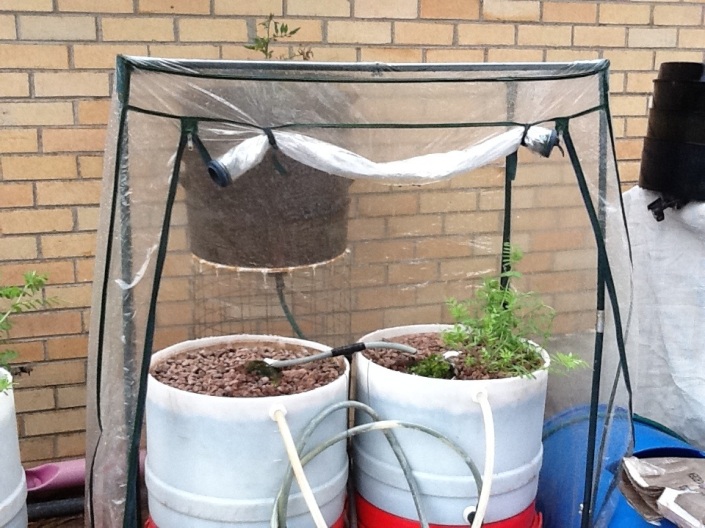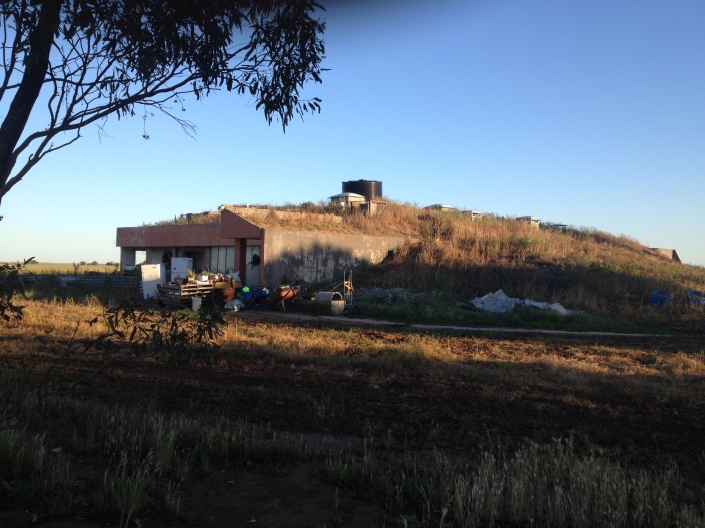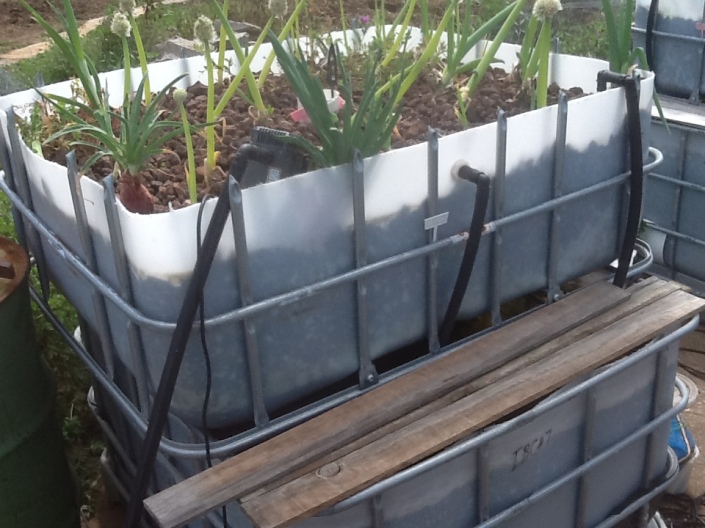Having been brought up on a broad acre farm in Western Victoria, Australia, I have always been around plants. My first veggie garden was about two meters square, a few flowers and veggies next to the apricot tree. No matter where I have been in the world there has always been a garden to tend to. Sometimes in pots, containers, styrofoam boxes and even waxed cardboard boxes if there was no dirt available.
Being a fisherman of small note I was interested in aquaculture but soon found the economies of scale a deterrent and there were problems with fish waste buildup resulting in a flush out wasting water. Hydroponics also had the same problem with nutrient buildup resulting in water changes with no use for that water either. More waste.
About eight years ago I started hearing hints of a method of combining the two systems and making the detrimental aspects work together resulting a closed loop organic garden.
Too good to be true was the general advice given but I started with an indoor aquarium with one yabbie and replaced the upper filter with soaked hydroton clay balls (so they didn’t float away) and a pea seed. Worked like a dream! This was all before digital cameras and YouTube.
This is my 2012 tank.
Works well every year and when I add a female she always “berries up” with eggs. After which she is moved to a breeding tank to let the young develop. Old Man yabbie stays there keeping enough nutrient in the water for the pea to use. More than one pea in this system results in yellowing of leaves on all plants. So rather than adding chelated iron or seasol I just have one pea plant.
So from this small start I have gotten bigger and more diverse as the following pix show.
More later…
It is now Nov 2013 and we have moved out to the family farm taking all the above with us. Now the ponic systems are on two cement slabs and waiting to be all hooked up to ‘float’ the water level across all the beds. Some updated pix…
The Terra-dome constructed as a piggery in the 1980’s was designed to maintain a stable temperature between 18 and 27 degrees Celsius regardless of the season, heat or wet. The four domes have been unused for some years with no real idea of what to use if for other than storage space. Now it is the centre of Cherax destructor (yabby), Bidyanus bidyanus (Silver perch) and Tandanus tandanus (Eel tailed catfish) breeding with applications in aquaponics.
Now we are here permanently i will try and use this blog to keep track of developments and ideas…
Anyone wants info from me or wants to add something by all means ask or make comment.
UPDATE October 2015.
After much pestering from followers I now have more pix to share and update on activities at the Garden of Earthy Treasures.
 This tiny raised bed was used as an experiment in growing potato above ground. The reason being every other time they were grown they rotted over the growing period or were killed by frosts. There were two “Red Legs” Rhubarb already there and another part of the trial was to see if they were companionable or not. I isolated the rhubarb with tree guards to enable direct watering and to stop mulch from contacting the stems causing rot. As the spuds came up, straw mulch was added so that just the tops were clear of the straw encouraging them to keep reaching for the light. I didn’t “bandycoot” any new spuds as I wanted to know how much you could get from six seed potatoes, three pink and three white.
This tiny raised bed was used as an experiment in growing potato above ground. The reason being every other time they were grown they rotted over the growing period or were killed by frosts. There were two “Red Legs” Rhubarb already there and another part of the trial was to see if they were companionable or not. I isolated the rhubarb with tree guards to enable direct watering and to stop mulch from contacting the stems causing rot. As the spuds came up, straw mulch was added so that just the tops were clear of the straw encouraging them to keep reaching for the light. I didn’t “bandycoot” any new spuds as I wanted to know how much you could get from six seed potatoes, three pink and three white.
 As you can see, the result was amazing! Over 9 kg of new spuds! The dirty ones were formed on the soil surface but the rest were in the straw and were largely clean. There were even some very small ones I left in the bed to come up next year, and sure enough I can now brag I can grow spuds like a weed!
As you can see, the result was amazing! Over 9 kg of new spuds! The dirty ones were formed on the soil surface but the rest were in the straw and were largely clean. There were even some very small ones I left in the bed to come up next year, and sure enough I can now brag I can grow spuds like a weed!
The nettle will be left to grow until it is needed for a fertilising tea in a few weeks, the spuds will be mulched again and hopefully another bag of new spuds will result. Remember what Granddad told you about rhubarb? If it goes to a flower head it either needs a good drink or a good feed! And use the leaves as an insect spray as they contain oxalic acid, that’s why you don’t eat them!!!
Here are some shots of the aquaponics system, it is really booming along now.
These three l to r is comfrey and carrots, vetch and carrots, purple cabbage vetch and onions.
L to r is vetch and onion, vetch and carrot, onions, rhubarb rainbow chard (flowering) and strawberries, vetch and carrot again. In front is spare space taken up with cuttings and trees in tubes for the bush food plantings. Why so much vetch I hear you ask? Chooks of course! Makes for bright yellow yolks and very healthy chicks. There will be a separate page on our poultry endeavors later…
These four beds are dedicated to their crops as a permanent bed. Back left is kale onion and carrot, front left is onion and vetch. Back right is silver-beet/chard and vetch and front right is carrot lettuce and onion. The red and white barrels are for mating yabbies, once the female berries up she goes into the fiberglass under-tank till the young have dropped of the tail. She goes back to the male for another clutch of eggs. The young are picked out at various stages of growth and graded then sent to the kitchen or into the breeding tanks inside the dome to continue cross breeding to develop better colors and size. (Below)
Shot from the top of the terradome, 14 beds with two IBC’s acting as water levelers which is where any new water gets added. All the beds float off each other so if there is a build up of ammonia/nitrite/nitrate it is spread over all the beds. I have not had a fish death related to lack of DO (Dissolved Oxygen) or overheated water in summer in the past two years. To the right of the cement slab under 20 cm of dirt is a coil of black 19 mm poly pipe which acts as a constant thermal mass, cooling the water in summer to 18 to 25 deg C and keeping it warm in winter at around 20 deg C. Very simple system using mostly recycled fittings found around the farm and from various tips and clearing sales.
More later…






























You must be logged in to post a comment.